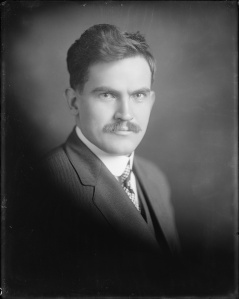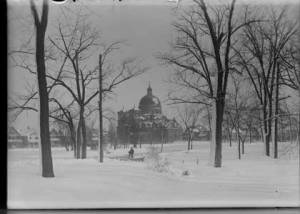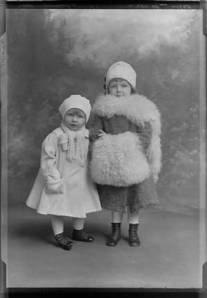Wisconsin might not seem like the most obvious place to look for traditional Chinese paintings produced during the last imperial dynasty of China, the late Qing dynasty. And yet, UWM holds an important collection of Chinese scrolls and fan paintings, which are now openly accessible in a new bilingual online collection. The Tse-Tsung Chow Collection of Chinese Scrolls and Fan Paintings provide a glimpse into the context, variety, and technique of Chinese scroll and fan painting in the 18th through 20th centuries.
So how did this collection end up in Milwaukee? Tse-Tsung Chow was a historian, poet and professor in the Department of East Asian Language and Literature at University of Wisconsin-Madison. Professor Chow’s book, The May Fourth Movement: Intellectual Revolution in Modern China, is regarded as being one of the first significant works on modern China. He and his wife, Nancy Wu Chow, donated the collection to the UW-Milwaukee Libraries’ Special Collections department in 2005. The collection consists of 129 items ranging from the 18th through the 20th century. To provide access to digital copies of scrolls and fan paintings, 98 items were selected for our online collection.
Digitization Librarian Ling Meng and intern Chia Shih built each record in the collection with both Chinese and English fields, so that both Chinese-speaking and non-Chinese-speaking audiences are able to read and understand the content of the scrolls. For example, a hanging scroll with a rubbing of Xu Zhang’s cursive calligraphy – 張旭草書拓本 – 張旭草書拓本”, features the artist Zhang’s cursive script (a style of Chinese calligraphy which is written quickly and can be quite difficult to read), and demonstrates how this style of calligraphy corresponds to the scroll’s text describing Zhang’s sudden and unbearable stomach ache.
In another work, Yue Ji’s fan painting of Sending-off Poverty – 季粵送窮圖, a description of the ritual of “sending-off poverty” accompanies the painting, allowing the audience to better understand and interpret the painting.
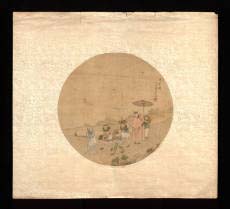 |
|
The collection also reflects the political ideology and patriotism of scholar-officials in the late Qing dynasty. Over half of the identified authors are recognized as renowned politicians as well as scholars, writers and/or artists. Through the medium of traditional painting, they embedded their reactions to the political climate by making demands for greater political participation, or signaling their political disappointment and withdrawal from that world. One of artists featured in the collection is Qichao Liang (1873-1929), who was a renowned philosopher and political scholar in the late Qing dynasty. Tse-Tsung Chow noted that Liang’s work, Rengong Liang’s (Qichao Liang) calligraphic couplet – 梁任公書集聯, was an expression of his frustration and pain after he lost his political mentor, Youwe Kang (1858-1927) (Kang and Liang were major leaders in the Hundred Days’ Reform, a national reform movement that failed in 104 days in 1898) and his friend Guowei Wang (1877-1927, a supporter of restoring the last emperor of Qing dynasty).
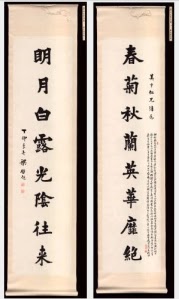 |
|
Other well-known political scholars in this collection include Xiaoxu, Zheng (1860-1938), Youwe Kang (1858-1927), Taiyan Zhang (1868-1936) and Zhenyu Luo (1866-1940). Researchers who are interested in modern China are bound to find interesting materials and connections between Chinese art and politics in this collection.
View the Collection
– Chia Shih
